order
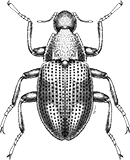
Coleoptera
“Adult Beetles”

Coleoptera
“Larval Beetles”

Diptera
“True Flies”

Ephemeroptera
“Mayflies”
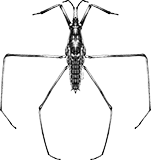
Hemiptera
“True Bugs”

Lepidoptera
“Aquatic Caterpillars, Snout Moths”

Megaloptera
“Alderflies, Dobsonflies, and Fishflies”
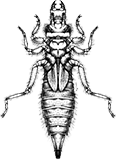
Odonata
“Dragonflies and Damselflies”
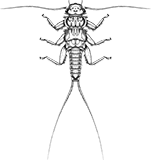
Plecoptera
“Stoneflies”
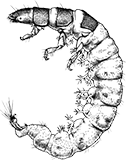
Trichoptera
“Caddisflies”
family
Caenidae
genus
Caenis
“Small Square-gilled Mayflies”
Genus Overview
Larvae of the 12 North American species of this genus prefer slow-moving or stagnant water where there is an abundance of silt, and loose sediment, and are often found sprawled on/in the silt or climbing among the plants. They feed by collecting and gathering tiny bits of organic matter or by scraping algae and biofilm from rocks and other substrates in their habitat. The adults and subimagos of this group are short-lived and hatch (molt into adults) in large numbers. They are imitated by fly fishermen; however, you must time your fishing trip just right or you will miss the "hatch." In addition, during the hatch, fish often feed almost exclusively on these insects, so fly-fishermen without matching tied-flies, are not likely to be successful.
Characteristics
POLLUTION TOLERANCE
Southeast: 7.6 and higher
Upper Midwest: 7 and higher
Midwest: 3.1 and higher
Mid-Atlantic: 7 and higher
0 = least tolerant, 10 = most tolerant
FEEDING HABITS
Collector / Gatherer
Scraper / Grazer
Scraper / Grazer
MOVEMENT
Climber
Sprawler
Sprawler
DISTRIBUTION
Widespread (east of the Rocky Mtns.)
HABITAT
Lentic-littoral
Lotic-depositional
Lotic-depositional
Diagnostic Characters
order
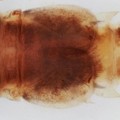
Abdominal Gills
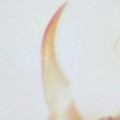
Single Tarsal Claw
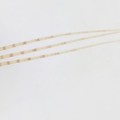
Usually 3 Tails
family
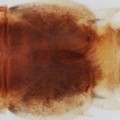
Square Semioperculate Gills
genus
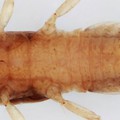
Eggs
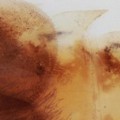
Operculate Gill with fringe of long hairs
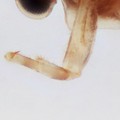
Stout spines on protibia and protarsus
+ Expanded Character List
Order:
Wings developing in wing pads. Mouthparts suitable for chewing. Gills present on tops and sides of abdomen. Segmented legs present. One tarsal claw per leg. Usually with 3 tails (sometimes 2).
Family:
Mesonotum without anterolateral lobes of Neoephemeridae. Hind wing pads absent. Paired gills on abdominal segment 2 nearly square, and meeting or almost meeting medially (but NOT fused), at least partially covering succeeding pairs (semi-operculate). Plate-like gills on abdominal segments 3–6 with fringed borders. Mature larvae 2–8 mm long, not including tails.
Genus:
Maxillary and labial palps three-segmented. Segments 2 and 3 of labial palps about same length or 3 shorter than 2, with few long setae and spines. Ocelli without neighboring tubercles. All legs subequal in length. Foretibiae and tarsi each with row of stout spines along inner margin. Outer margins of operculate gills fringed with long setae. Note: Several eggs can be seen looking at the ventral of thorax and abdomen in the given picture.
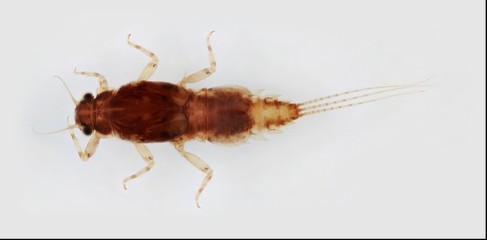
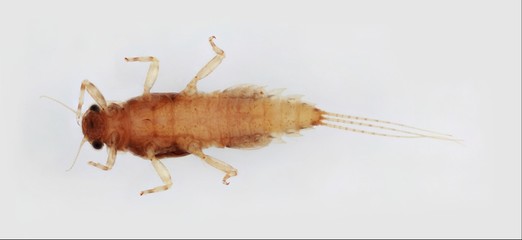
Dorsal
Ventral



